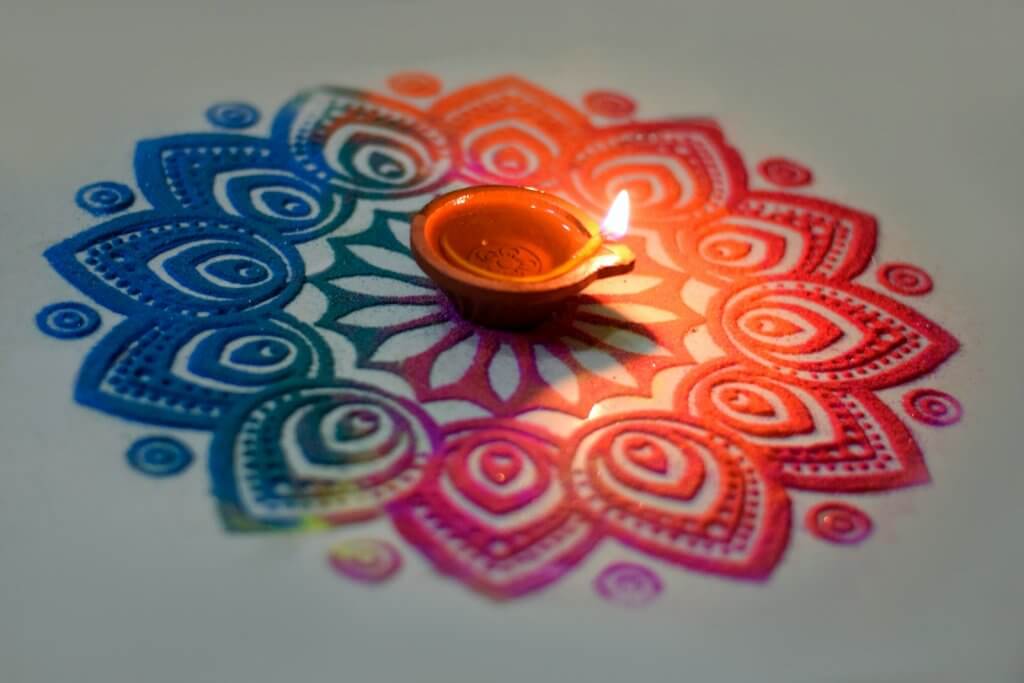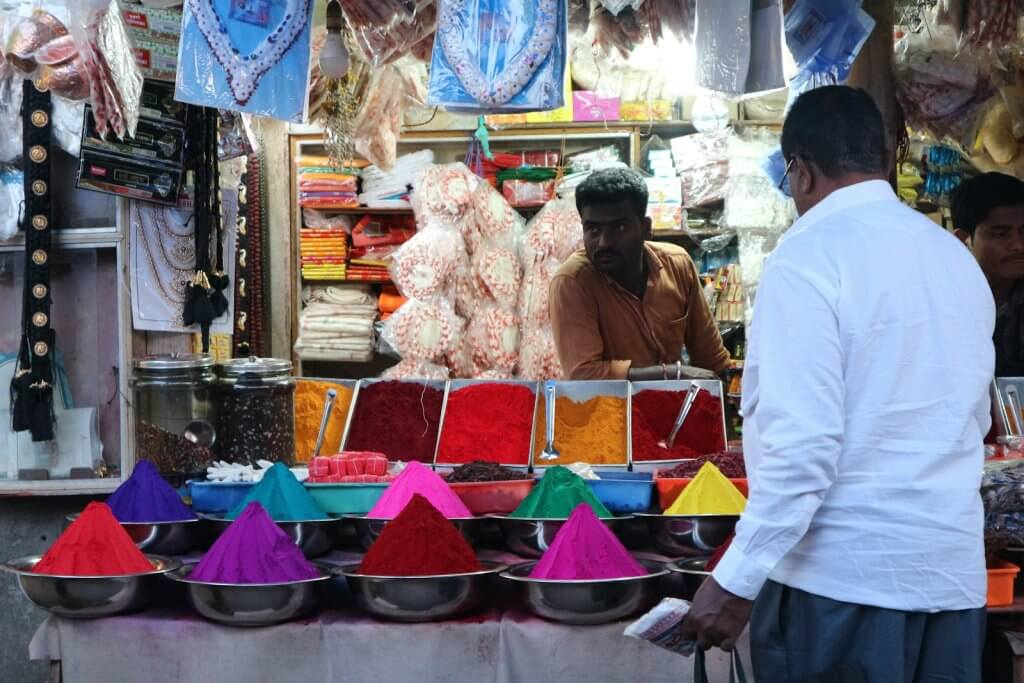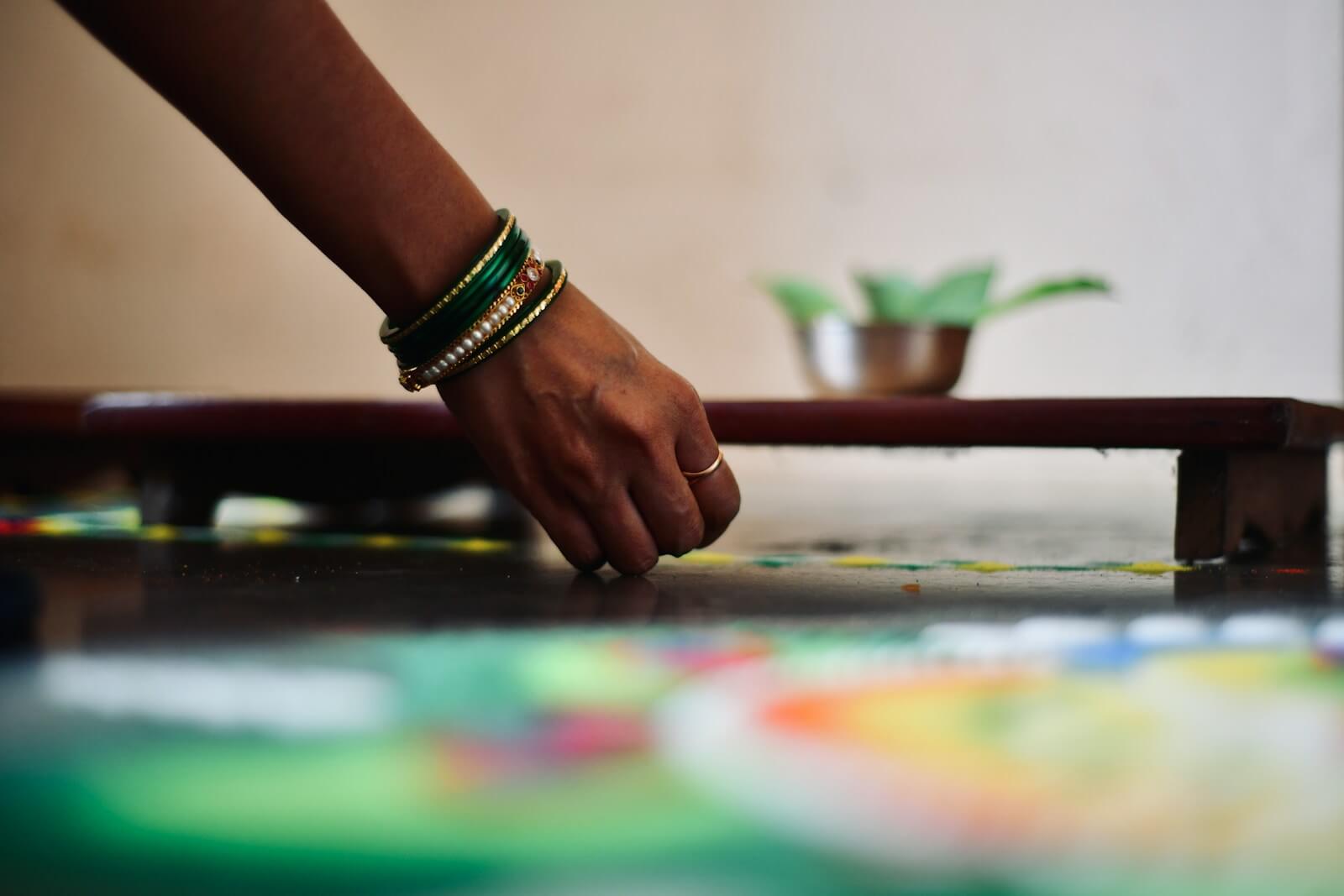Rangoli, a vibrant art form originating from the Indian subcontinent, is like a colorful welcome mat created on floors or tabletops using materials such as powdered limestone, rice flour, and flower petals. This traditional practice, often seen during Hindu festivals like Diwali, is believed to bring good luck and prosperity to the household, much like hanging a horseshoe above a door in Western cultures.
Symbolism in Rangoli Designs
Rangoli designs are rich in symbolism, often incorporating elements that represent prosperity, harmony, and spiritual beliefs. Common motifs include peacocks, symbolizing grace and beauty, and lotus flowers, representing purity and enlightenment. Geometric patterns are also prevalent, with circular designs signifying the endless cycle of time.
The use of vibrant colors adds layers of meaning – for instance, red represents energy and strength, while green symbolizes nature and growth. Interestingly, the very act of creating rangoli is symbolic; its ephemeral nature reflects the transience of life, similar to Tibetan sand mandalas. Some believe that using rice flour in designs serves to feed small creatures, embodying the principle of sharing and compassion.
Regional Variations of Rangoli
Rangoli, like a chameleon, changes its colors and patterns across India, adapting to local traditions and cultures. In Maharashtra, it’s known as Raangoli, featuring geometric designs drawn on a grid of dots, like a colorful connect-the-dots puzzle. Down south in Tamil Nadu, it transforms into Kolam, with intricate patterns that often resemble a maze. Up north, the designs become more flamboyant, while in Bengal, it’s called Alpona and typically features large white circular designs.
- Maharashtra: Tipkyanchi Raangoli (dot Rangoli) and Sanskar-Bharati Raangoli (without dots)
- Tamil Nadu: Kolam, often made daily as a morning ritual
- West Bengal: Alpona, usually created during major Bengali festivals
- Gujarat: Known as Sathiya, often resembling a beautiful maze puzzle
- Assam: Bihu Alpana, featuring traditional Assamese motifs during festivals
These regional variations are like different dialects of the same language, each telling a unique story of local culture and traditions through vibrant colors and intricate patterns.
Materials Used in Rangoli Art
Rangoli artists are like culinary chefs, using a colorful palette of ingredients to create their masterpieces. Traditional materials include rice flour, a staple that doubles as bird food, and vibrant natural powders like turmeric for yellow and vermilion for red. Modern artists have expanded their toolkit, incorporating:
- Colored sand for a beach-like texture
- Flower petals for a fragrant touch
- Grains and pulses, creating a 3D effect
- Sawdust and marble dust for unique textures
- Seashells for coastal-inspired designs
These materials are not just visually appealing but often carry deeper meanings. For instance, using rice flour is believed to invite prosperity, while flower petals symbolize nature’s beauty. The choice of materials can transform a simple design into a multi-sensory experience, engaging sight, touch, and sometimes even smell, making each rangoli a unique work of art.
Rangoli Styles and Varieties
Rangoli is like a box of crayons, offering a variety of styles to color your world. Here are some popular types you might encounter:
- Dot Rangoli: Think of it as a colorful connect-the-dots game. Artists start with a grid of dots and create intricate patterns by connecting them, perfect for beginners.
- Flower Rangoli: Imagine painting with petals instead of paint. This type uses flower petals and leaves to create vibrant, fragrant designs.
- Sanskar Bharti Rangoli: Picture concentric circles filled with bright colors and intricate patterns, like a kaleidoscope on your floor.
- Quilling Rangoli: Think of it as paper origami meets floor art. This type uses rolled paper strips to create 3D designs.
- Free-hand Rangoli: Like finger painting for grown-ups, this style allows artists to express themselves without preset patterns.
Each type offers a unique way to celebrate festivals and welcome good fortune, turning your floor into a canvas of cultural expression.
Making Rangoli Patterns

Creating rangoli is like painting with powders, where the floor becomes your canvas. The process typically begins by marking a center point and cardinal directions, usually forming a square, hexagon, or circle. From this simple foundation, artists weave intricate patterns, often inspired by nature or geometric shapes.
Rangoli creation comes in two main flavors: dry and wet. The dry method involves sprinkling colored powders directly onto the floor, while the wet technique uses a paste-like mixture for more precise lines. For beginners, starting with a dot grid can be like following a colorful connect-the-dots puzzle.
More experienced artists might freehand their designs, letting creativity flow like a river of colors. To add depth and texture, some creators use materials like flower petals, grains, or even sand.
Modern artists have also embraced “readymade” stencils and stickers, making it easier to achieve complex designs without years of practice. Whether traditional or contemporary, each rangoli tells a unique story through its vibrant patterns and symbolic motifs.
Festival Centerpiece

Rangoli plays a starring role in Indian festivals and celebrations, acting as a vibrant welcome mat for both deities and guests. During Diwali, the Festival of Lights, rangoli takes center stage, adorning thresholds with radiant hues to welcome Goddess Lakshmi, believed to bring prosperity and good fortune. These colorful designs are like spiritual beacons, guiding positive energy into homes and warding off evil spirits.
- Diwali: Elaborate rangolis decorate entrances, often accompanied by oil lamps
- Sankranti: In South India, special designs called Muggulu feature sun and harvest symbols
- Weddings: Intricate patterns grace the feet of brides and grooms in Sikh ceremonies
- Other occasions: Rangolis mark births, naming ceremonies, and coming-of-age rituals
Beyond religious significance, rangoli serves as a unifying tradition, bringing people together to create art and celebrate cultural diversity. Like a colorful thread weaving through India’s tapestry of festivals, rangoli transforms ordinary spaces into sacred ones, infusing celebrations with beauty, creativity, and a touch of divine blessing.




